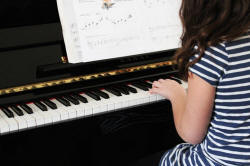TKT Core Module 3:Teachers'
and learners' language in the classroom
Identifying the functions of learners' language
 |
Teachers, of course, have to able to communicate lots of ideas
and express functions in the classroom. The last two guides
were about how to do that.
Learners, too, need to be able to function communicatively in the
classroom.
 |
Key concepts in this guideBy the end of this guide, you should be able to understand and use these key concepts: |
Look out for these words like this
in the text.
There will be tests at the end of the guide for you to check that
you understand the ideas.
 |
What do learners need to be able to do in the classroom? |
If learners are to get the most from your classroom, they need to
have some control. Controlling what happens to you is mostly
to do with using language appropriately.
In the classroom, this is called metalanguage because it only has a
classroom function. Most of the exponents can, however, be
used in other settings.
 |
Task 1:
What kinds of things do learners need to get done: – with each other? – with the teacher? When you have thought of a short list, check here. |
-
With each other:
- Telling and explaining: often, you want learners to help each other so they need to know how to impart information appropriately
- Starting a task: in pair- and group-work, this is often quite difficult
- Asking each other what they think and saying what they think: getting and giving opinions
- Agreeing and disagreeing: politely!
- Encouraging each other: motivating, supporting, congratulating etc.
-
With the teacher:
- Asking questions about: meaning, form, pronunciation
- Asking for clarification
- Asking for repetition
- Asking for permission (to leave the room, be late etc.)
- Express doubt
- Apologising
- Explaining
At more advanced levels, most learners are able to do all of this quite appropriately most of the time. However, especially at lower levels, these functions and their exponents need to be taught.
| Function | Possible exponents |
|
telling and explaining |
|
|
starting a task |
|
|
asking about / giving opinions |
|
|
agreeing and disagreeing |
|
|
encouraging |
|
|
asking questions about: meaning, form, pronunciation |
|
|
asking for clarification |
|
|
asking for repetition |
|
|
apologising |
|
|
explaining |
|
| asking
permission |
|
 |
Teaching the exponents |
This can't all be done at once.
Before you set a task in pairs or groups, check that the learners
have the metalanguage to be able to negotiate with each other and
ask questions.
Nearly all of these exponents can be taught as language chunks
without spending time explaining the meanings of all the words or
the structures involved.
One good idea is to have a classroom poster which is permanently on display and which you can use to practise polite intonation and other pronunciation features. Like this (the are called class callouts, by the way):

 |
Self-test questions |
Before you go on, make sure you can answer these questions. If you can't, go back to the sections which give you trouble.
If you are happy with your progress, go on.
 |
Tests and practice for TKT |
This is a short, simple guide so there's only one practice test.
| Test 1 | A matching task |
Now you can return to the Module 3 index:
![]()
or go on to the next
guide which is to
categorising learners' mistakes.
